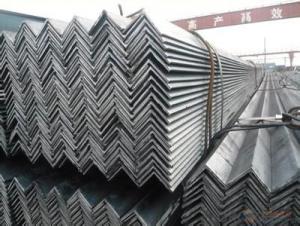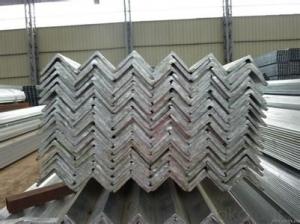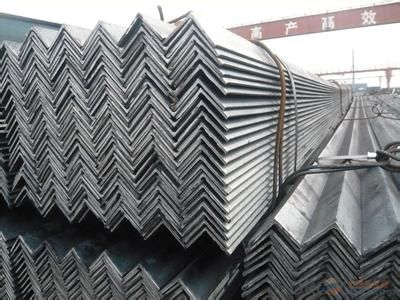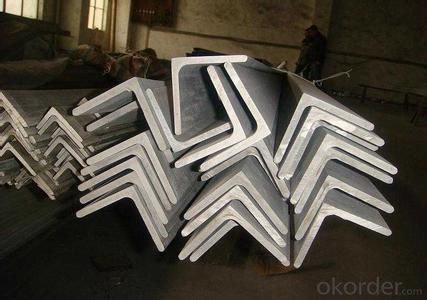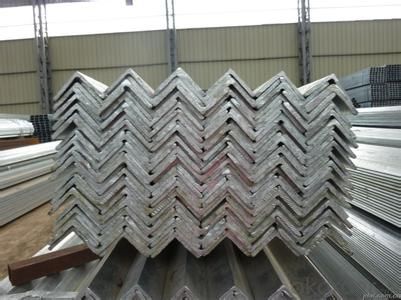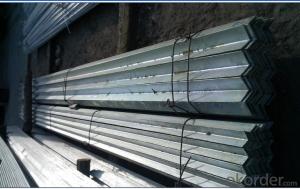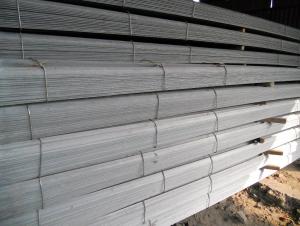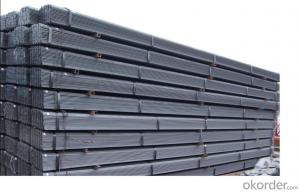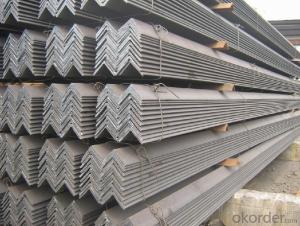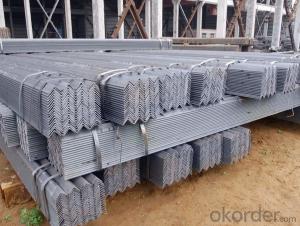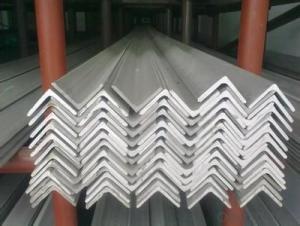Angle Steel High Quality Hot Rolled Q235 OR ASTM A36
- Loading Port:
- China Main Port
- Payment Terms:
- TT or LC
- Min Order Qty:
- -
- Supply Capability:
- -
OKorder Service Pledge
OKorder Financial Service
You Might Also Like
Product Description:
OKorder is offering high quality Angle Steel High Quality Hot Rolled Q235 OR ASTM A36 at great prices with worldwide shipping. Our supplier is a world-class manufacturer of steel, with our products utilized the world over. OKorder annually supplies products to European, North American and Asian markets. We provide quotations within 24 hours of receiving an inquiry and guarantee competitive prices.
Product Applications:
According to the needs of different structures, Angle can compose to different force support component, and also can be the connections between components. It is widely used in various building structures and engineering structures such as roof beams, bridges, transmission towers, hoisting machinery and transport machinery, ships, industrial furnaces, reaction tower, container frame and warehouse etc
Product Advantages:
OKorder's Angle Steel High Quality Hot Rolled Q235 OR ASTM A36 are durable, strong, and resist corrosion.
Main Product Features:
· Premium quality
· Prompt delivery & seaworthy packing (30 days after receiving deposit)
· Corrosion resistance
· Can be recycled and reused
· Mill test certification
· Professional Service
· Competitive pricing
Product Specifications:
Manufacture: Hot rolled
Grade: Q195 – 235
Certificates: ISO, SGS, BV, CIQ
Length: 6m – 12m, as per customer request
Packaging: Export packing, nude packing, bundled
Sizes: 25mm-250mm | ||||||||||||
a*t | ||||||||||||
25*2.5-4.0 | 70*6.0-9.0 | 130*9.0-15 | ||||||||||
30*2.5-6.6 | 75*6.0-9.0 | 140*10-14 | ||||||||||
36*3.0-5.0 | 80*5.0-10 | 150*10-20 | ||||||||||
38*2.3-6.0 | 90*7.0-10 | 160*10-16 | ||||||||||
40*3.0-5.0 | 100*6.0-12 | 175*12-15 | ||||||||||
45*4.0-6.0 | 110*8.0-10 | 180*12-18 | ||||||||||
50*4.0-6.0 | 120*6.0-15 | 200*14-25 | ||||||||||
、60*4.0-8.0 | 125*8.0-14 | 250*25 | ||||||||||
FAQ:
Q1: Why buy Materials & Equipment from OKorder.com?
A1: All products offered byOKorder.com are carefully selected from China's most reliable manufacturing enterprises. Through its ISO certifications, OKorder.com adheres to the highest standards and a commitment to supply chain safety and customer satisfaction.
Q2: How do you package the angle steel when shipping?
A2: All goods are packed in bundles with steel strips and shipped by container or break bulk.
Q3: The products are invoicing on theoritical weight or on actual weight?
A3: We can do it in both manners, according to the customers' request.
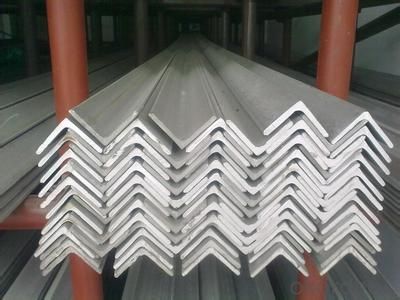
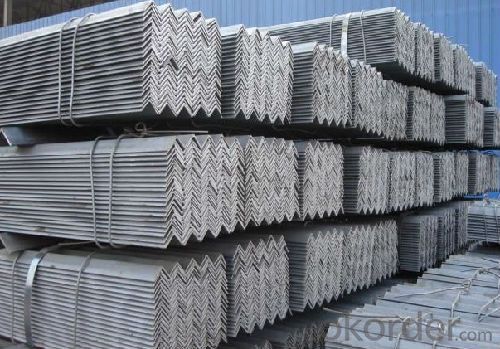
- Q: How do steel angles perform under seismic loads?
- Steel angles are widely used in construction to provide support and reinforcement for structures. Their inherent properties and design flexibility make them highly effective in seismic conditions. A major advantage of steel angles is their impressive strength-to-weight ratio. This enables them to withstand the intense forces and movements caused by earthquakes without significant deformation or failure. The angle's compact shape also helps distribute the load efficiently, reducing stress concentrations and potential weak points. Furthermore, steel angles can be easily connected to other structural elements, creating a robust and reliable connection system. This is crucial in seismic design, where the ability to transfer forces and accommodate movements is vital. To further enhance their performance under seismic loads, steel angles can be designed with specific features. For example, the addition of stiffeners or bracing elements can increase their resistance to lateral forces, minimizing the risk of buckling or collapse. Using thicker and stronger steel grades can also improve their capacity to absorb and dissipate seismic energy. Various seismic design codes and standards provide guidelines and requirements for the use of steel angles in earthquake-resistant structures. These codes consider factors such as maximum stress levels, connection details, and overall structural behavior during seismic events. In conclusion, steel angles excel in seismic conditions due to their high strength-to-weight ratio, efficient load distribution, and design flexibility. When properly designed and implemented, they effectively withstand the forces and movements generated during earthquakes, ensuring the structural integrity and safety of buildings.
- Q: Can steel angles be used for electrical conduits or cable trays?
- Depending on project requirements and regulations, steel angles can serve as support structures for electrical conduits or cable trays. These angles are well-known for their strength and durability, making them commonly used as structural supports. However, when considering their use for electrical conduits or cable trays, it is imperative to ensure that they meet the necessary electrical and safety codes. Electrical conduits and cable trays are specifically designed to house and protect electrical wires or cables in a safe manner. These systems must be capable of withstanding the weight of the cables, providing proper grounding, and offering sufficient protection against physical damage, moisture, and other potential hazards. Steel angles can be employed as support structures for electrical conduits or cable trays, providing a robust framework for the installation and securement of the system. However, it is crucial to ensure that the steel angles are effectively grounded, insulated, and guarded against corrosion to meet all electrical safety standards. Furthermore, the selection of the appropriate size and dimensions for the steel angles should be based on the weight and size of the cables or wires being installed. To guarantee compliance with all necessary requirements, it is important to consult with electrical engineers or professionals who are familiar with local electrical codes and standards. In conclusion, while steel angles can be utilized for electrical conduits or cable trays, it is essential to carefully consider the specific requirements and regulations of the project to ensure electrical safety and compliance.
- Q: Are steel angles suitable for seismic design?
- Seismic design commonly utilizes steel angles. Steel angles possess several advantages that render them appropriate for seismic design. To begin with, steel angles exhibit a high strength-to-weight ratio, enabling them to endure substantial seismic forces while remaining relatively lightweight. This quality is essential in seismic design as it permits the construction of structures capable of efficiently absorbing and dissipating seismic energy. Moreover, steel angles possess exceptional ductility, which refers to their ability to deform without fracturing. During an earthquake, structures undergo significant deformations caused by ground shaking. Steel angles can absorb these deformations by flexing and bending without compromising their structural integrity. This ductility aids in dissipating seismic energy and preventing sudden structural collapses. Furthermore, steel angles can be easily connected and fabricated, facilitating efficient construction in seismic zones. They can be welded or bolted together to create rigid connections capable of resisting seismic forces. The versatility of steel angles allows for the design of various structural elements, like braces, beams, and columns, that can effectively withstand seismic loads. Additionally, steel angles possess exceptional durability and corrosion resistance, which are vital in seismic design. Structures in seismic zones often face harsh environmental conditions, including moisture and corrosive agents. Steel angles can withstand these conditions and maintain their structural integrity over time. In conclusion, steel angles are well-suited for seismic design due to their high strength-to-weight ratio, excellent ductility, ease of fabrication, and resistance to corrosion. These characteristics make steel angles a reliable choice for constructing structures that can endure and safely absorb seismic forces.
- Q: What are the standard lengths for steel angles?
- Steel angles come in a range of standard lengths, which can vary depending on the manufacturer and project requirements. Commonly available options include 20 feet, 30 feet, and 40 feet. Additionally, it is worth mentioning that steel angles can be custom cut to fit specific application needs.
- Q: What are the different surface finishes available for painted steel angles?
- Painted steel angles offer a range of surface finishes to meet aesthetic and functional needs. 1. Achieving a smooth finish involves evenly applying a coat of paint and then curing it for durability. 2. Textured finishes create a rougher surface with patterns or textures, achieved through techniques like sandblasting or textured paint. These finishes enhance grip and reduce slipperiness in applications requiring traction. 3. Matte finishes have low sheen or gloss levels, resulting in non-reflective surfaces. This option is ideal for applications desiring a subdued appearance. 4. On the other hand, glossy finishes have high sheen or gloss levels, creating reflective and shiny surfaces. They provide a polished and visually appealing look to painted steel angles. 5. Powder-coated finishes are popular for their durability. This method involves coating the steel angle with a dry powder, which is then cured under heat to form a protective layer. Powder-coated finishes offer excellent resistance to scratches, chemicals, and UV rays. 6. Galvanized finishes involve applying a layer of zinc to the steel surface, providing corrosion resistance. While typically not painted, galvanized steel angles can be painted over if desired, allowing for various color options. In summary, painted steel angles offer a variety of finishes including smooth, textured, matte, glossy, powder-coated, and galvanized. The choice depends on the intended use, desired appearance, and required durability for the application.
- Q: How do steel angles contribute to the overall safety of a building?
- Steel angles, also known as angle irons, play a crucial role in enhancing the overall safety of a building. These structural components are widely used in construction due to their unique properties and benefits. Firstly, steel angles provide structural support and stability to a building. They are commonly used to reinforce and strengthen the framework of a structure, particularly at key load-bearing points. By distributing and transferring the weight and forces, steel angles help prevent excessive deflection or deformation of the building, ensuring its integrity and stability even under heavy loads or adverse conditions. This reinforcement is especially important in high-rise buildings or structures located in regions prone to earthquakes or strong winds. Additionally, steel angles contribute to the safety of a building by acting as a barrier or shield against potential hazards. For example, they can be installed as protective guards or handrails on staircases, balconies, or elevated platforms. These barriers help prevent accidental falls or injuries, providing a secure environment for occupants. Steel angles can also be used to create safety barriers around machinery or equipment, preventing unauthorized access or accidental contact. Moreover, steel angles enhance fire resistance in buildings. Steel is inherently fire-resistant and does not contribute to the spread of flames. By incorporating steel angles into the building's structural design, fire-rated walls, partitions, or fireproof doors can be effectively supported. This helps to compartmentalize a building, slowing down the spread of fire and allowing occupants more time to evacuate safely. Furthermore, steel angles offer longevity and durability, making them an ideal choice for long-term safety. Steel is highly resistant to corrosion, weathering, and other environmental factors, ensuring the structural integrity of the building over time. This durability reduces the risk of sudden structural failures or collapses, enhancing the overall safety for occupants and nearby structures. In conclusion, steel angles play a significant role in enhancing the overall safety of a building. Their ability to provide structural support, act as barriers, enhance fire resistance, and offer durability make them crucial components for ensuring the stability and protection of a structure and its occupants.
- Q: What are the common surface treatments used for steel angles?
- The common surface treatments used for steel angles are galvanizing, painting, and powder coating. Galvanizing is a process where a layer of zinc is applied to the surface of the steel angle to protect it from corrosion. This is achieved by immersing the steel angle in a bath of molten zinc or by applying a zinc coating using a specialized technique. Galvanized steel angles have a shiny, silver appearance and provide excellent corrosion resistance. Painting is another commonly used surface treatment for steel angles. The steel angle is typically primed and then coated with one or more layers of paint. This not only enhances the aesthetic appeal of the steel angle but also provides a protective barrier against rust and other environmental factors. Painting allows for a wide range of color options and finishes, making it a versatile choice for various applications. Powder coating is a dry finishing process where a fine powder, typically made of resin and pigment, is electrostatically applied to the steel angle's surface. The angle is then heated, causing the powder to melt and form a durable coating. Powder coating offers excellent resistance to scratches, chemicals, and UV rays. It is available in a wide array of colors and provides a smooth and even finish. The choice of surface treatment for steel angles depends on the specific application and the desired level of protection, aesthetics, and durability. Galvanizing is preferred in outdoor or corrosive environments, while painting and powder coating are commonly used for indoor applications or where a specific color or finish is desired.
- Q: How do steel angles perform under cyclic loading?
- Steel angles perform well under cyclic loading due to their high strength and stiffness. They are capable of resisting repeated loading and can withstand significant stress and strain without experiencing fatigue failure. The structural design of steel angles allows them to efficiently distribute and dissipate the applied loads, making them reliable and durable in cyclic loading conditions.
- Q: What are the different methods for strengthening steel angles?
- Different techniques can be employed to enhance the strength of steel angles, based on the specific necessities and intended uses. The following are several commonly used methods: 1. Heat treatment: To increase the hardness and strength of steel angles, heat treatment processes such as quenching and tempering are frequently employed. Quenching involves rapidly cooling the steel angle after heating it to a high temperature, while tempering includes reheating the quenched steel angle to a lower temperature. These processes minimize brittleness and improve toughness. 2. Alloying: By introducing certain alloying elements like chromium, molybdenum, or nickel, the strength and hardness of steel angles can be significantly augmented. These alloying elements form solid solutions with the iron matrix, leading to enhanced mechanical properties and resistance to wear or corrosion. 3. Cold working: The strength and hardness of steel angles can be increased through cold working techniques such as cold rolling, cold drawing, or cold forming. These approaches involve deforming the steel angle at room temperature, creating dislocations in the crystal structure and boosting its strength. 4. Welding: Strengthening steel angles can be achieved by employing welding methods like fusion welding or spot welding to join them with other steel components. The weld joint often provides additional strength and rigidity to the steel angle structure. 5. Surface treatments: Employing various surface treatments such as galvanizing, powder coating, or painting can improve the corrosion resistance of steel angles, thereby increasing their durability and overall strength. It should be noted that the selection of the appropriate method for strengthening steel angles relies on factors such as the specific steel grade, intended application, and desired mechanical properties. Consulting with a professional engineer or metallurgist is advisable to determine the most suitable method for a particular scenario.
- Q: How do steel angles perform under static or stationary loading conditions?
- Steel angles are widely utilized in construction and engineering due to their strength and versatility. They exhibit excellent performance and stability when subjected to static or stationary loading. In the case of static loading, the angle remains motionless while a load is applied. Steel angles are specifically engineered to withstand such loading conditions. Their structural properties enable them to resist bending and twisting forces, ensuring they can effectively support heavy loads without experiencing significant deformation or failure. Moreover, steel angles evenly distribute the applied load along their length, minimizing stress concentrations. This property allows the angle to efficiently transfer the load to the supporting structure, thereby providing stability and maintaining structural integrity. Furthermore, steel angles have the ability to withstand compressive forces, which attempt to compress or shorten the material. Their L-shaped profile and cross-section contribute to their resistance against compressive loading. This characteristic makes steel angles suitable for applications where static loads exert compressive forces, such as columns, beams, and bracing elements. Additionally, steel angles possess high resistance to shear forces, which occur when different parts of a structure slide or move in opposite directions. The design of steel angles, with perpendicular legs, enhances their shear strength, enabling them to effectively resist shear loading under stationary conditions. In conclusion, steel angles demonstrate exceptional performance under static or stationary loading. Their structural properties, including resistance to bending, twisting, compression, and shear forces, make them suitable for various construction and engineering applications.
Send your message to us
Angle Steel High Quality Hot Rolled Q235 OR ASTM A36
- Loading Port:
- China Main Port
- Payment Terms:
- TT or LC
- Min Order Qty:
- -
- Supply Capability:
- -
OKorder Service Pledge
OKorder Financial Service
Similar products
Hot products
Hot Searches
Related keywords
